![]()
|
John Edwards John
Edwards & Co |
Location and period of operation:
|
John Edwards |
Longton/Fenton |
1847 |
1873 |
|
John
Edwards & Co |
Fenton |
1873 |
1880 |
|
John
Edwards |
Fenton |
1880 |
1900 |
China &
earthenware
manufacturer at Longton and then King Street,
Fenton, Stoke-on-Trent,
England.
|
The
London Gazette
13th January 1865
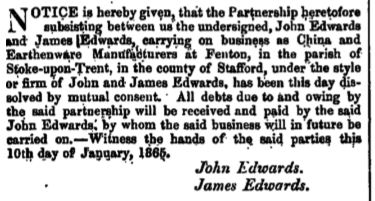
notice of the dissolution of
the partnership between
John & James Edwards - John Edwards to carry
on the business on his own account
The London Gazette
11th December 1877
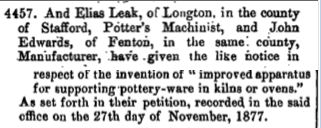
notice of a patent for an
improved
method of supporting ware during firing
|
King Street Works These works were established in the latter part of last century [18th C.] by Mr. Shelley, who was succeeded by Mr. Marsh, from whom they passed to Messrs. T. & J. Carey. The productions of these firms were the ordinary Rockingham ware and common classes of earthenware ; Messrs. Carey also occupying two other manufactories at Longton. They were next held by a company, and about 1850 passed into the hands of the present proprietor, Mr. John Edwards. The goods now produced are semi-porcelain and white granite for the American markets. Until 1856 Mr. Edwards produced china in addition, but this has since then been discontinued. Mr. Edwards is patentee of a process for making thimble pins; and he also, in 1859, took out a patent for "improvements in stacking or holding biscuit, earthen, china, and glossed ware for firing" by means of "a ring frame or holder, with a rim or flange projecting inwardly, so as to occupy the whole or part of the centre of the ring." |
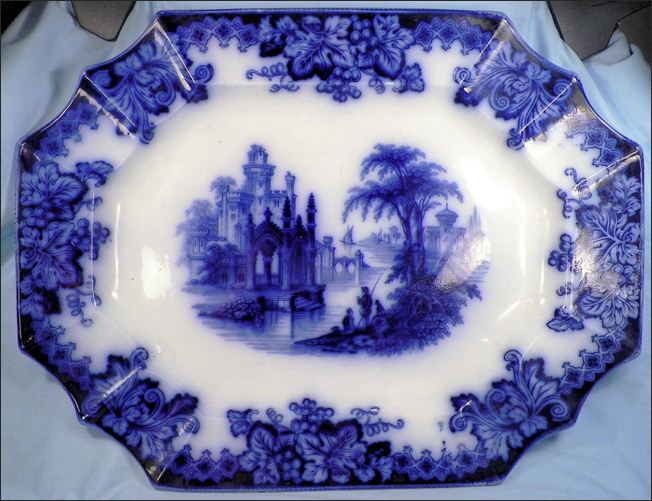
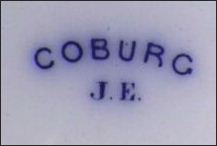
large flow blue platter in the
Coberg pattern
c.1847-73
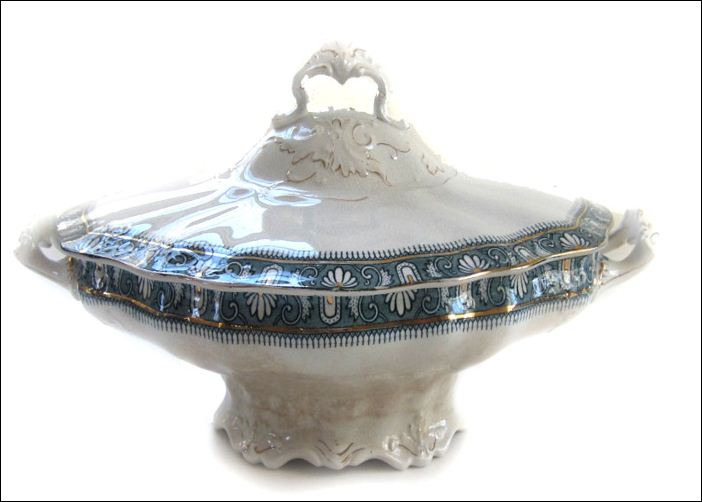

lidded tureen in the Ophir
pattern
c.1891-1900

fragment bearing a John Edwards
mark found in 2024
on a beach in Maine, USA. c.1880 - 90 photo courtesy: Rebecca Sellers
|
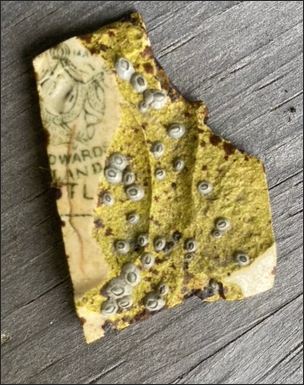
fragment bearing a John Edwards
mark found c.1891-1900 photo courtesy: Kaitlyn Kirby |
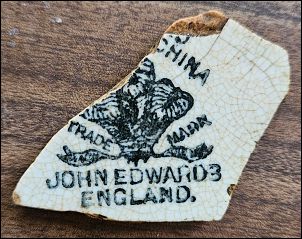
fragment bearing a John Edwards
mark with the Prince of Wales feathers c.1891-1900 photo courtesy: Tenny Platt |
John Edwards produced
significant amounts of
semi-porcelain and white granite for the American markets
Marks &
initials used on
ware for identification:
J. E.
impressed or printed -
c.1847-73
J. E. & Co
c. 1873-79
JOHN EDWARDS & CO
c. 1873-79
JOHN EDWARDS
c. 1880-1900
PORCELAINE DE TERRE
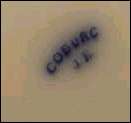
J E
impressed or printed -
c.1847-73
'Coberg' is a pattern name
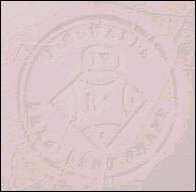
J. Edwards
President Shape
impressed mark with a registration diamond
 Warranted Ironstone China John Edwards mark with the Prince of Wales feathers |
 Porcelaine De Terre John Edwards |
printed marks
without ENGLAND
c.1880-1891
 Porcelaine De Terre John Edwards England 'Holland' is a pattern name |
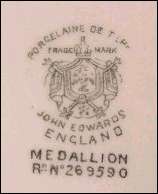 Porcelaine De Terre John Edwards England 'Medallion' is a pattern name the registration number 269590 shows that the pattern was registered on the 22nd January 1896 |
printed marks
including ENGLAND
c.1891-1900
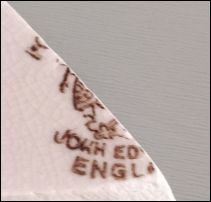
Po_
John Ed_
Engla_
shard found [2024] on a beach on Anglesey, Wales
photo courtesy: Seb Green
Questions, comments, contributions? email: Steve Birks